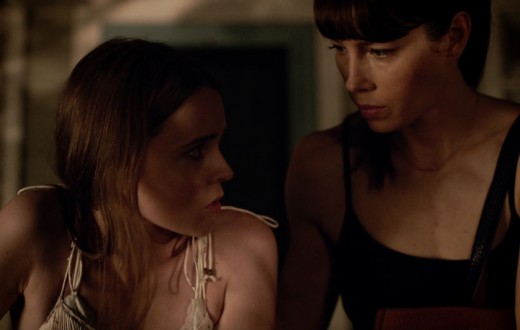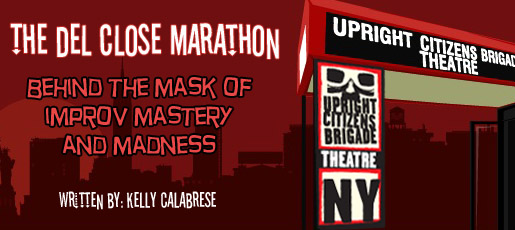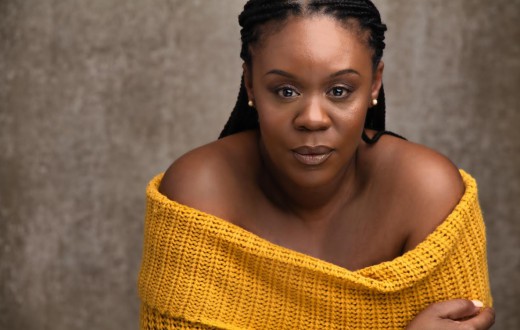“When I did plays in high school and college, I never remember memorizing my lines…Before I had blocking, it was just text on a page. Once it became embodied, it was much easier.”
–Greta Gerwig (“Lady Bird”)
As actors we talk so much.
And so much of our talk is about talking. We talk about memorizing lines, getting off-book, finding our objectives and the various tactics we use to try to achieve them through our characters. And in all that talk, something often gets missed or at least put aside: What about the rest of us?
After all, actors aren’t just brains attached to vocal cords perched atop a spinal column. (How’s that for a vision of “Theater of the Future” in some sci-fi, dystopian nightmare?)
No, we are people playing people, and people have bodies that are constantly in motion.
So let’s talk blocking.
First of all a definition, just in case: blocking is the general term used to describe an actor’s physical movements when performing, whether it be on stage or on camera.
A director will have you “cross” – literally walk across the space – toward or away from another actor, sit on the furniture, stand, fall down, put on a jacket, pick up a prop, etc. etc. All of this is your blocking. There are dozens of more specific, technical-ish terms breaking these moves down into more detail – for instance, instead of taking a straight path you might do a “banana right” (take a curved path) you might “cross up(stage)” or “cross down(stage)” of another actor, or be asked to “cheat out” (turn body and face more toward camera or the audience) when in a certain conversations.
Understanding how all of this works is important, and a quick search will show tons of resources out there breaking down the various terms stage managers and directors use to indicate blocking.
But that’s just the mechanics of it. The importance of blocking to a play or a film goes much deeper than that; it’s so much more than just “stand over there, say this line, then cross to this spot.”
In fact, the way characters move in scene is a vital part of the storytelling of the piece. Think for a moment about silent films: even between the cards that would pop up on screen with dialogue on them, the performers still managed to tell a story – without sound.
Thinking of your blocking in this light can be incredibly useful: remember that you are a storyteller at all times when you’re performing; just because it isn’t your line at the moment doesn’t mean the camera or the audience can’t see you. They still “hear” the story you’re telling even when you’re silent.
A person who is confident moves and carries themselves differently than a person who is nervous or insecure. A person who is PRETENDING to be confident moves differently from one who actually is confident. The way you get up from a chair, the speed with which you approach another character – all of these details matter to the story you’re trying to tell.
Don’t Be a Robot
One common mistake a lot of less-experienced actors make is they assume that since a director is ultimately responsible for setting their blocking, they have no agency over it. You can see this in countless high school and community theater plays: actors passively move from spot to spot, just as they were told to do, but lacking any purpose or drive or impetus to get them there. They are essentially on autopilot: “say these words, now go to this place, now say more words,” and so on and so on until the play finally, mercifully ends.
The audience can tell when this is happening. Know why? Because the characters in the play are meant to represent human beings, and the audience is made up of human beings too. So the falseness of movement that’s unmotivated or robotic – just doing as you’re told with no organic reason behind it – is really, really apparent. The audience may not always know WHY it seems wrong, but they know it seems wrong.
And while it’s true that the director and/or cinematographer will decide where you need to be in order to make a shot or a scene work, you still have to be involved. You are part of a collaboration, and you have a responsibility to give your character life. It’s perfectly acceptable and usually even encouraged by most directors for an actor to speak up if they feel uncomfortable or false with a bit of blocking. That’s not to say you should automatically argue with every single little blocking choice. But if something feels weird to you as the actor playing the character, its going to look weird on stage or film. The director can often help you figure out a way to make it work.
And look, it might come down to “I just need you to be over there at this point.” That’s the reality of acting, after all: it’s ultimately a simulation of life. But that still doesn’t let you off the hook! If you’re given an unalterable blocking direction like that, you still have to find a reason to carry it out. Make one up if you have to, but you’ve got to have a purpose or it reads to the audience like you are drifting. So…
Don’t Be a Drifter
As people and thus as actors our movements are informed by our desires, our objectives and the tactics we use to chase after them. Floating about shuffling your feet while having a conversation might be what happens from time to time, but even that is informed by desire: “I’m trying to spare you pain and thus avoiding telling you something,” for instance, or “I want to get away from you,” and that objective comes out in motions that are uncertain.
But most of the time the way we move illustrates what we want – or how we are trying to hide what we really want – in a stronger way. And here’s the thing: your CHARACTER can be uncertain. You the actor cannot. You have to know why you’re moving the way you’re moving and where, and execute it with intent and purpose.
A happily married couple moves around each other differently from an unhappily married couple. There is purpose and intent in these moves, if I either desire to be with you more than anything, or conversely can’t stand to be around you, I’m going to move differently.
The bottom line is that, just as it’s your responsibility to learn your lines and show up on time, it’s your responsibility too to make sure that in your scene analysis you explore every aspect of how the lines and the character arc and your objectives inform your blocking. And that you get them ingrained so they’re as natural as your own movements. Take this extra step and you will be well on your way to creating a fully fleshed-out, rich, genuine and deep character that the audience will instantly get!
Learn More ShowBiz Terms!







